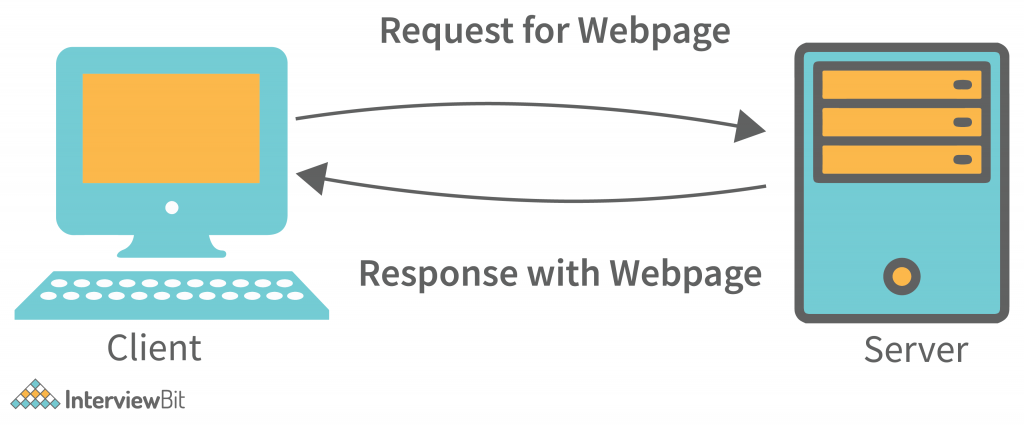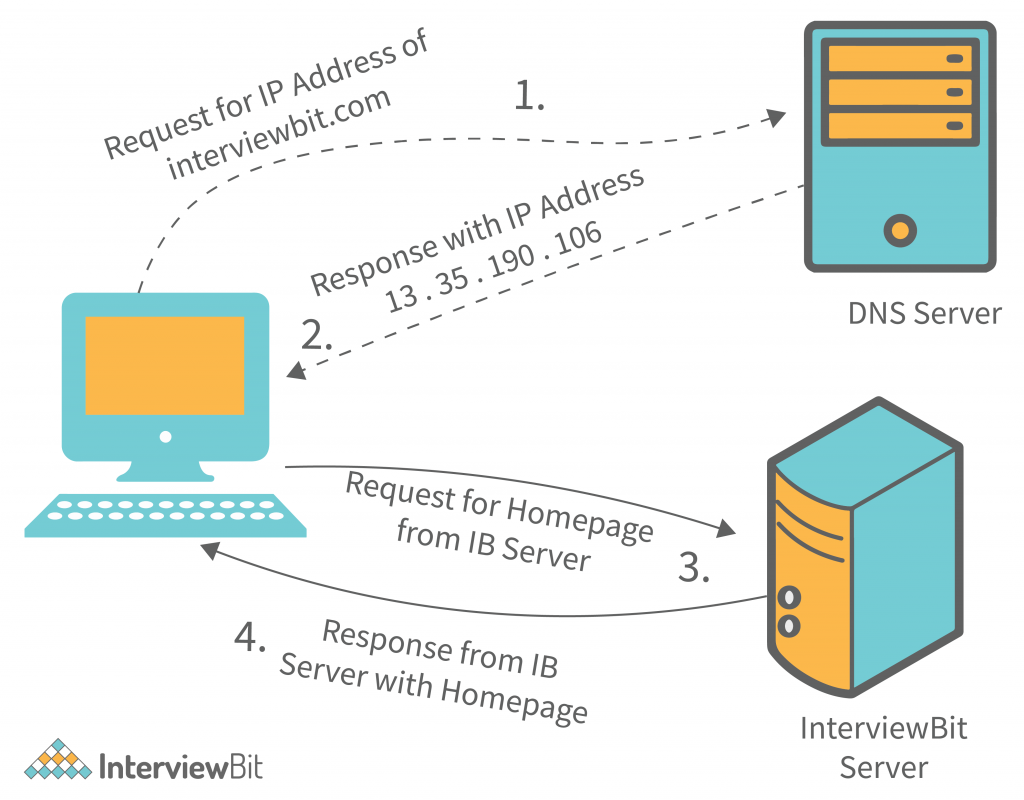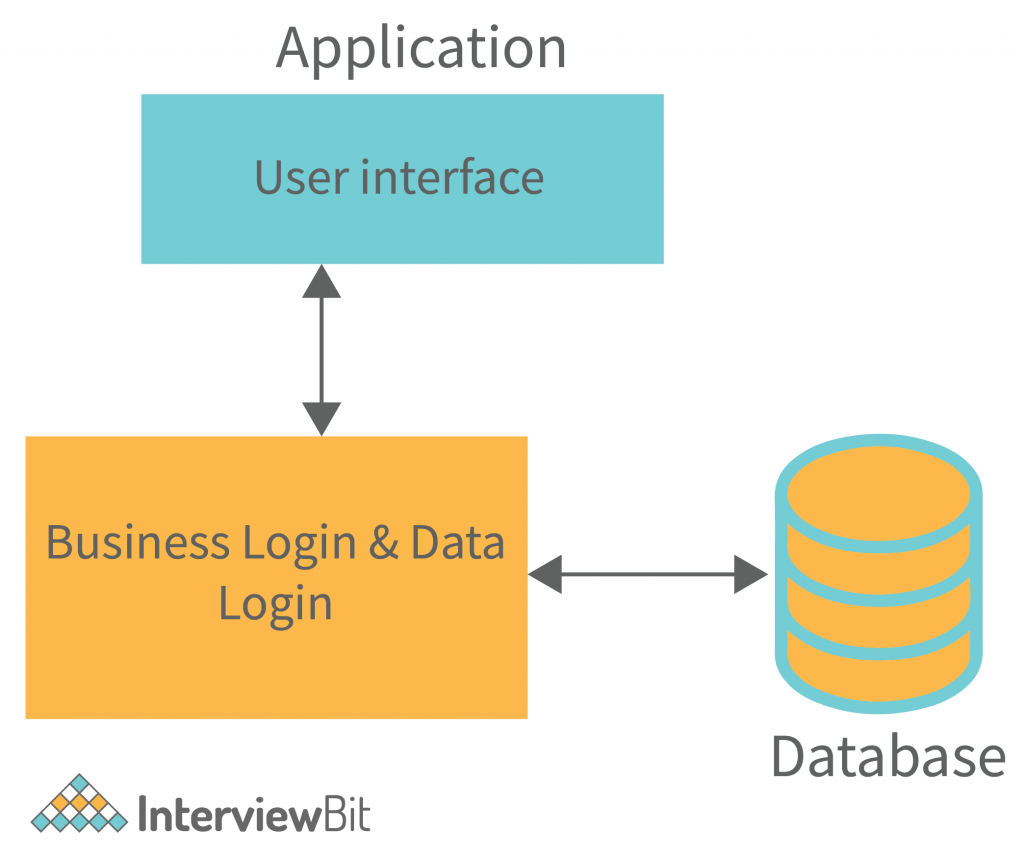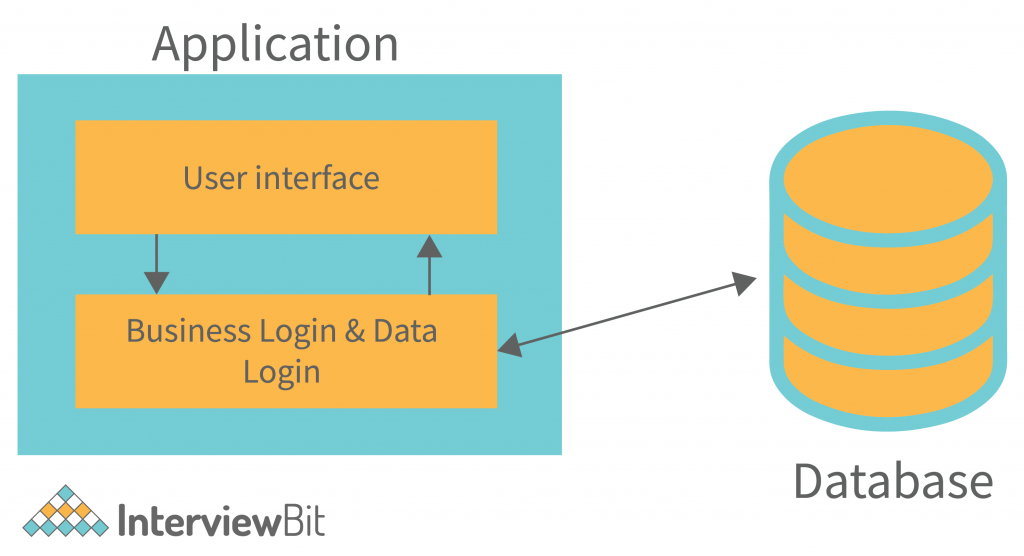In a client-server architecture, every process or computer in a network functions as a server or client. Client servers are potent computers whose sole purpose is to handle printers, disk drives, and network traffic. The clients run their applications on their workstations or personal computers. The servers primarily provide resources, such as devices, files, and processing power.
But Before understanding better client-server architecture, let’s first understand what this client and server are all about.
Client – The client can be any computer that requests something from the server. For example – visiting any website we request the webpage from its domain. So here we act as a client.
Confused about your next job?
Server – On the other hand, the Server is the computer that is designed to serve the requests to the client. For the same example as above, the client asks for the webpage then the server responds with the webpage to the client.

What is Client-Server Architecture?
The client-server architecture or model is an application network separating tasks between clients and servers that are either within the same system or need to communicate over a network. In order to access the service provided by the server, the server-client sends the request to another program, which runs a few programs that distribute work among the clients & share resources with them.
A client-server relationship corresponds to the request-response pattern and should adhere to a standard communications protocol that defines the language and rules used for the communications. The client-server communication adheres to the TCP protocol suite.
Client/server messages are exchanged via the TCP protocol until the connection is complete. TCP protocol determines how data should be distributed in packets that networks will deliver, transfers packets to and receives packets from networks, and manages flow control or retransmission of garbled and dropped packets.
The Internet Protocol is a connectionless protocol, which means that each packet traveling on the Internet is an independent piece of data, unconnected to any other packet.
How Does Client-Server Architecture Work?
We already have studied what is the client and what is the server. Now let’s understand the working of this architecture.

In the above image, If any client wants some data with any server then it first asks for the IP address for the particular server from the DNS (Domain name System). The DNS server responds with the IP Address.
To that IP Address, the client sends the request to the particular server with the port number that is specified to the particular application, and then the server responds. The response message receives by the client and based on the port number, the response packet is consumed by the application to which it belongs.
Here at a very high level, the communication between the client and server happens over the HTTP packets.
Types of Client-Server Architecture
Client-Server Architecture is categorized into different types based on the business logic implemented for the request to be handled between client and server. So let’s learn about the different kinds of Client-Server Architecture examples.
1-Tier Architecture

In 1-Tier Client Server Architecture, Everything related to the application is grouped and used as a single package to deliver the application. All the logic related to the User Interface, Business Logic, Database Logic, and Database are grouped to make a single entity.
A 1-tier architecture offers various services that make it a reliable source, but it is complex to manage. The data variance is the primary problem. Work is often duplicated. A 1-tier architecture involves several layers, including the presentation layer, business layer, and data layer, which are combined using a unique software package. This layer usually stores data within local systems or on a shared drive.
2-Tier Architecture

In 2-tier Client Server Architecture, the whole application logic is divided into 2 layers. Majorly database acts as a separate entity in this architecture. Databases are designed separately and then the main application has all the logic related to the user interface and the business logic and database logic to communicate with the database and process the applications. This architecture has a better environment than the 1-tier architecture.
In comparison to 1-tier architectures, 2-tier architectures are faster since there is no intermediary between the client and the server. The 2-tier architecture helps avoid client confusion. The online reservation system is a popular example of a 2-tier architecture.
3-Tier Architecture

In contrast to the architecture of a 2-tier system, which has no middleware, a 3-tier system has a middleware between the client and the server. When a client requests information from the server, the request is first received by the middleware. The request will then be sent to the server for processing. Similarly, the server will send a response to the client.
In 3-tier architecture, there are three main layers: presentation layer, application layer, and database layer. Different ends of each layer control each other. Client devices control the presentation layer, whereas the middleware and server control the application layer and database layer, respectively. The existence of a third layer that provides data control makes the 3-tier architecture more secure, has invisible database structures, and ensures data integrity.
Advantages of Client-Server Architecture
- Management is Easy – It is rather easy to manage the files because they are all stored on one server. Client-server networks have the best management to track and find records of required files.
- Easily Accessible – Clients can log into the system regardless of their location or their platform of choice, allowing each employee to access their corporate information without having to use a terminal mode or a processor.
- Servers are Scalable – A client-server network is highly scalable. Whenever the user needs, they can add more resources such as clients and servers, thus increasing the size of the server without any interruption. Due to the fact that the server is centralized, permission to network resources is not an issue, so very few staff members are required for configurations even if the size increases.
- Centralized Control – Client-server networks have the advantage of centralized control since all information is stored in a single location. Since the network administrator has full control over management and administration, this is especially beneficial. As a result, any problems that arise throughout the entire network can be solved from one central location. As a result, it has also become much easier to update data and resources.
- Security – Due to its centralized architecture, client-server networks protect data well. A single backup can be used to recover all of the files if the data are lost, such as imposing credentials like username and passwords. Another method of enforcing access controls is imposing credentials like username and password.
Disadvantages of Client-Server Architecture
- Less Robust – Due to client-server networks’ centralized nature, in case the main server undergoes failure or interference, the entire network will be interrupted. Thus, client-server networks are less robust.
- Requires Regular Maintenance – Servers will run continuously on the network. This means they must be properly maintained. If there are any problems, they should be fixed immediately. A network manager should be appointed to maintain the server.
- Requires Cost – In a client-server network, the cost of setting up and maintaining the server is usually very high, just as it is on the network operations. Because the networks are powerful, they can be expensive to purchase. Thus, not all users will be able to take advantage of them.
- Network Congestion – If too many clients access a single server, it may result in crashes or slowed-down connectivity. An overloaded server presents many problems when accessing information.
Conclusion
The client-server architecture enables updates to a shared database from multiple users through a graphical user interface. All businesses, big or small, use the power of networking to grow and digitalize their businesses, market their products, and update themselves on news and events in their particular fields. So this article helps you to understand how networking establishes strategies for communication for the different types of organizations.







 Join WhatsApp Group
Join WhatsApp Group


